The Songs and tune
The Halsway Carol - 3:30 – Siobhán Kennedy
Winter’s Turning (instr.) 3:32 Denis Donnelly
Gaia’s Grace :54 Penny Sidor
Despite years of seeking out and collecting this kind of music from both North America and Britain, I was unfamiliar with The Halsway Carol (known as the Halsway Schottische when it is in tune form) but in researching for this series I discovered it along with many other fine versions on YouTube. This version by Siobhán Kennedy (née Maher) was recorded on her most recent album Séid. Her accompanist is Jens Kommnick.
If you click on the above picture you can hear this same recording but with a slideshow of pictures taken at midwinter from the British National Trust’s nature preserve of Watlington Hill in Oxfordshire.
The catchy schottische melody came first, written by hurdy-gurdy player Nigel Eaton in October 2011. A schottische is a partnered country dance that originated in Bohemia. It was very popular in Victorian era ballrooms. Soon after he wrote it a friend who was organizing a hurdy-gurdy workshop at Halsway Manor invited him to teach it at the workshop.
I don’t know if Nigel gave the tune its name, or if that is just what the folks at the workshop began to call it. One of the attendees was another hurdy-gurdy player, Iain Frisk. He was inspired to make some minor adaptations and write these seasonal lyrics for it. Thus, The Halsway Carol was born ten years ago, and both the tune and this wonderful Winter Solstice song soon went international.
But I didn’t find out about it until this year. Shame on me! The Halsway Carol/Schottische even has its own website (based in New Zealand!) that includes sheet music and lyrics, various multi-part arrangements including one for an STAB choir, and a searchable data base that includes 176 recordings from all over the world.
The lyrics to the song are:
Lo for the tiding of the Long Night Moon
Let the sunrise call about the morning soon
Short is the biding of the fading light
Sing for the coming of the longest nightNorth wind tell us what we need to know
When the stars are shining on the midnight snow
All of the branches will be turned to white
Sing for the coming of the longest nightA winter day, the summer grass turned hay
Frost in the field ‘til the dawn of May
A summer’s light never shone as great or as bright
So dance in the shadows of a winter’s nightLo for the tiding of the Long Night Moon
May the harvest last until the springtime bloom
Home is our comfort at the winter’s height
Sing for the coming of the longest nightAll of the colours of the sunrise sky
Shine a light upon us, as the day goes by
Sunsetting shadows fading out of sight
Sing for the coming of the longest nightA winter day, the summer grass turned hay
Frost in the field ‘til the dawn of May
A summer’s light never shone as great or as bright
So dance in the shadows of a winter’s night
According to the New Zealand website:
During the adaptation from the instrumental Schottische to the sung Carol, the tempo of the song was reduced, some notes were replaced with rests for breathing, and some simplification was done to make it more suitable for the voice.
Intended to be enjoyed by singers and listeners of all beliefs, the carol is unusual in being both secular and non-commercial. The lyrics refer to the winter solstice in the northern hemisphere, and the ambience that can come about from the changes to the light and colours in the countryside around us, as well as our hopes for future seasons and memories of seasons past.
The tune Winter’s Turning was written by the late Becky Bernson (1953-2000.) Becky was born and raised in Salt Lake City. In 1975 she moved to Portland, Oregon where she loved to explore the wild areas of the Pacific Northwest. In 1987 she moved to BC where she quickly established herself as one of the bricks of the Victoria Folk Music Club. She soon married Denis Donnelly, one of the Club’s founders. After Becky died of cancer at such a young age members of the Club assembled this CD album so that her music would not be forgotten.
This tune is played by Denis, and according to him it is one of her finest compositions. And Denis knows a good tune when he hears one – besides being a folkie in the Pete Seeger sing-along tradition, and a harpist, he was the Principal of the Victoria Conservatory of Music. Later he became arranger and co-director of the un-auditioned Gettin’ Higher Choir (where he was even able to keep me more-or-less in tune and in time with other members of the Bass section.)
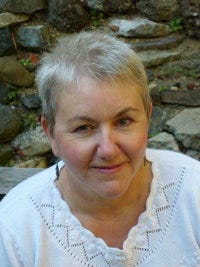
This short grace song was also written by Becky and it comes from that same tribute album. It is sung here by Penny Sidor, who now lives on Gabriola Island, one of the smaller islands (with a population of about 4000) that can only be reached by ferry from the Big Island where I live.
I’m sure she is the Matriarch of folksingers on that musical Island and is quite capable of keeping its unruly folkie crowd in harmony. (I know some Gabriola folk – they would consider the adjective unruly as high praise. They would be very offended if anyone called them ruley.) I suppose that it would be an oversimplification to describe Gabriolites and others on the Gulf Islands as falling into one of two categories: wealthy places who use it as their vacation get-away, and leftover hippies and other artistic people.
Penny is an activist and one of her current passions is ensuring that Gabe will never have a bridge marring their splendid separation from what they consider to be stodgy and overcrowded Vancouver Island.







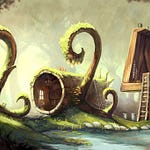


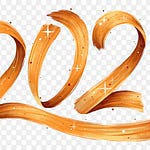

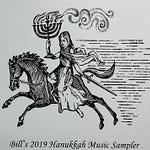
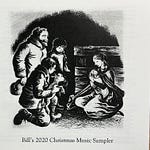

Share this post